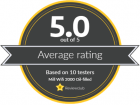Country Focus: Australia
“Yes we do have kangaroos” and what European retailers can learn from the other end of the world!
With a mini-series that puts markets Aqipa operates in the spotlight, we want to help new brands assess the attractiveness of the market and inspire retailers to learn from their peers in other countries. Let’s dive right into the first one: No, not landlocked Austria, but coastal Australia!
The Economy
Australia is by all means a country of large numbers. The distance between its most northerly point and its most southerly point is more than 3,800 kilometers and 4,000 kilometers from east to west. That’s about the distance between Madrid in Central Spain all the way to Moscow.
Why is this important?
Because it poses certain challenges in retailing when it comes to logistics and distribution. With a population of 25 million and a landmass almost as big as Europe’s, servicing the market can be tricky. On the upside, 89% of the population reside in urban locations, which exposes brands to a dense concentration of highly engaged consumers and gives them the chance to test the waters in some major metropolitan areas. First comes Sydney with more than 5 million inhabitants, followed by Melbourne (slightly below 5 million), Brisbane, Perth and Adelaide.
Australia’s economy is strong despite bush fires and COVID, but the impact of the virus was nowhere near as severe as in Europe. Growth momentum is already returning, and the economic outlook for 2021 looks more positive than it did a few months ago, economists say. This reflects in recent data, whereby the economic growth amounted to 3.3 percent in Q4 2020, building approvals hit a record high, real estate prices returned to stable numbers and consumer sentiment saw a 10-year high as well as a 7 percent surge in retail spending in November.
“The rebound has been very strong. We would generally expect (economic) growth in the next year to be around 3.7 per cent,” said chief economist Alan Oster of National Australia Bank according to news reports. A more detailed insight into the implications of COVID 19 on the Australian economy can be found at a detailed report from consultancy McKinsey here.
More predictions for the retail landscape were already on the horizon, but due to the pandemic, the following developments will likely happen faster than within the estimated 10-year time frame:
- A rise in online shopping will reduce store sizes and make way for showrooming.
- Shopping centers will expand beyond mixed-use precincts to become community hubs.
- A shift away from global consumerism might make Australia-owned and locally made a focus for consumers once again.
We expected to see these changes 5 to 10 years from now, but due to COVID-19, the timeline will likely be shorter.
The Ecosystem
Australian CE retail is dominated by a number of large international and local Australian players, the biggest ones being:
- JB HiFi
- Harvey Norman
- Officeworks
- David Jones
- The Good Guys
- Myer
- Kogan
- Catch
Kogan is specifically noteworthy as a company founded in 2006 as a pure-play online player that now makes about 420m A$ with a huge impact on TV sales and other categories. Kogan’s exclusive B-brands range is composed of 20 in-house brands, including Kogan-branded consumer tech, white goods and appliances as well as Ovela house goods furniture, Komodo camping gear, Certa power tools, Orbis luggage, Fortis sports equipment, Bella Vita health tech, Estelle beauty products, Bubbli baby products and Pawever Pets pet gear.
Australia is one of the top five global spenders in consumer goods online at 1,157 AU$ average revenue per e-commerce user. The online market in Australia isn’t dominated by Amazon but by eBay as it was the very first e-commerce platform to reach Australia, having been established in 1999 – just four years after the US launch. Since then, eBay has continued to reign supreme in the Australian e-commerce sector.
Marketplace and classifieds site Gumtree Australia comes in second, while next in line are Amazon, Woolworths and CE retailer JB Hifi. Founded in Australia in 1974, JB Hi-Fi began as a brick and mortar retailer supplying consumer electronics and entertainment goods. In 2000, JB Hi-Fi launched its e-commerce site and has seen significant success as the country’s leading online provider of electronics. They have also expanded to New Zealand. JB Hi-Fi product categories include computers and tablets, TVs, headphones, speakers and audio, smart home, mobile phones, gaming, drones and robotics as well as home appliances.
The market size for consumer electronics is $7.6bn AUD – forecast to reach $9.7bn by 2025 (excluding electronic household appliances e.g. washing machines, dishwashers and coffee machines). The share of the online business is already at 38% forecast to reach 42% by 2025 [Source: IBISworld – Online Consumer Electronics Sales in Australia] and the online market is dominated by 4 players, namely JB Hi-Fi, Amazon, Kogan and Harvey Norman.
Brick & mortar numbers in consumer electronics are considerably high with roughly 1.300 outlets, led by the JB Group with ~400 stores and Harvey Norman with 250. [Source: IBISworld – Consumer Goods Retailing Australia]
Within this ecosystem, Aqipa currently serves the following channels:
- Consumer Electronics ( mass market ) – Audio
- Appliance Retail ( mass market ) – Appliance
- Department Store ( specialty verity retail )
- FMCG Varity Retail ( Cosco / ALDI)
- Automotive Retail
- Stationery Retail
- Hi-Fi Speciality Independent Retail
- Airport Retail
- Rewards Programs
- Online
- Commercial / Education ….
Influencers
Statistically speaking, you’re much more likely to trust a friend’s recommendation over an ad. But what about a recommendation from an influencer? Given their unique pull, they’re definitely someone you should consider part of your inner circle.
Consumers are 71 percent more likely to make a purchase based on social media referrals, and according to the PwC Total Retail Survey, 45 percent of global respondents said that reading reviews, comments, and feedback influences their shopping behaviour. So, who is influencing Australians?
In the world of consumer electronics the following sites, magazines and influencers are of importance:
Consumer electronics brands
Audio: The audio market is dominated by JBL, Sonos, Bose and Sony and thus not much different from markets in Europe. It is interesting to note that smart speaker penetration in Australia is higher than in the US. 29% of the Australian adult population used smart speakers at the end of 2018 compared to about 26% in the U.S. Google Home has a smart speaker market share of 68%, well ahead of Amazon Echo with 14%. Aqipa is present in the market with brands like AudioPro, Devialet, Marshall, Adidas, Urbanears, Pure, Pantheone and Braun.
Home appliances: Home appliances encompass everything from white goods (washing machines, dishwashers, refrigerators, washer-dryers) to small kitchen appliances to home care robots and vacuum cleaners to water carbonators and hairdryers. On the world market, Australia sits at number 17 with an expected volume of about US$862m in 2021. Revenue is expected to show an annual growth rate (CAGR 2021-2025) of 6.1%, resulting in a projected market volume of US$1,094m by 2025. This compares to a market size in the US of more than US$ 21bn and Germany coming in on third place with roughly US$4,5bn [Source. Statista: Houshold Appliances Australia]. The carbonator market is one of Aqipa’s niche markets. Dominated by SodaStream for 100 years already, the market is now challenged by Swedish rising star aarke, a brand that offers a design-driven alternative to the market leader.
Aqipa has two major new players in Australia: Milo, a brand specialising in action gear (stay tuned for a report on the CES star that just won T3’s best CES outfoor tech award) and dash cam expert Nextbase.
Aqipa insights
Market access and terms and conditions for brands entering the Australian retail market vary between brick & mortar stores and online stores.
Retailers in Australia, especially in consumer electronics, have very strong negotiation power – many brands get neglected due to marketing or brand building efforts. Retailers try to minimize their commercial risks as much as possible.
In summary, what would our team say are the winning particularities of the Australian market?
- Willingness of customers to spend money on home appliances/furnishings
- Willingness of customers to be open to research/willingness to try new brands (brand loyalty is a distant second in many consumer categories)
- Large retailers are particularly segmented – for example: one retailer taking over 70% of the portable audio market share while others have a very strong focus on premium home audio
The key message our Australian team has for brands that plan to enter or conquer the Australian market is to NOT neglect the potential for brand building activations and to spend money over-and-above the line to make line-and-price promotions less necessary and less frequent.
Such a strategy would entail a higher prioritisation of the Australian market by international brand managers.
Aqipa Australia – our pitch to brands:
Our biggest strength lies in our largely unmatched service offer, which will develop even further as more brands attempt to enter the market and require value-added distribution. Additionally, with brands consolidating global operations, we will use the opportunity to step up as local operations are winding down.
If you have any questions about Aqipa services in Australia, feel free to reach out to Christopher Scott.




